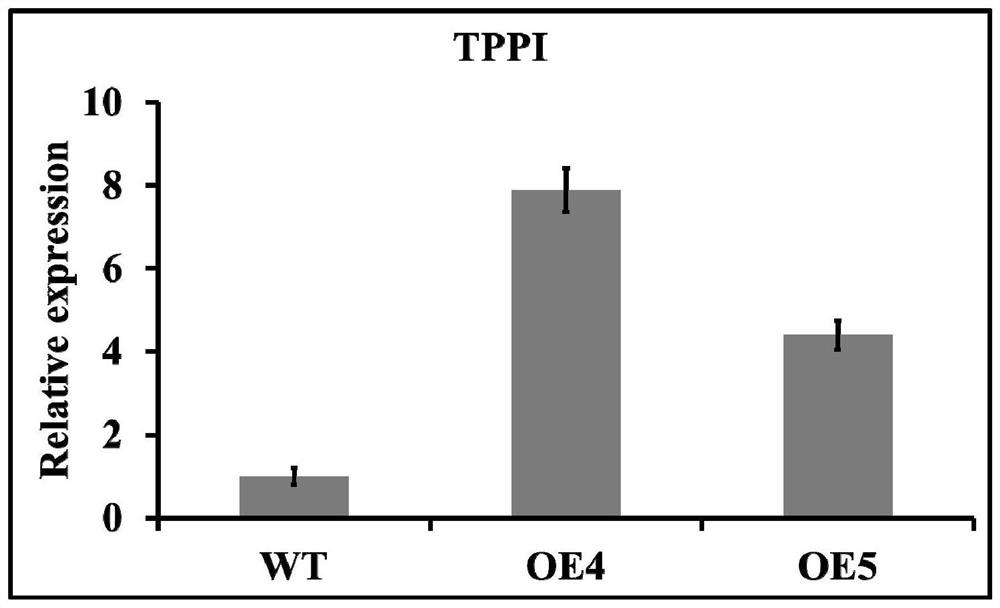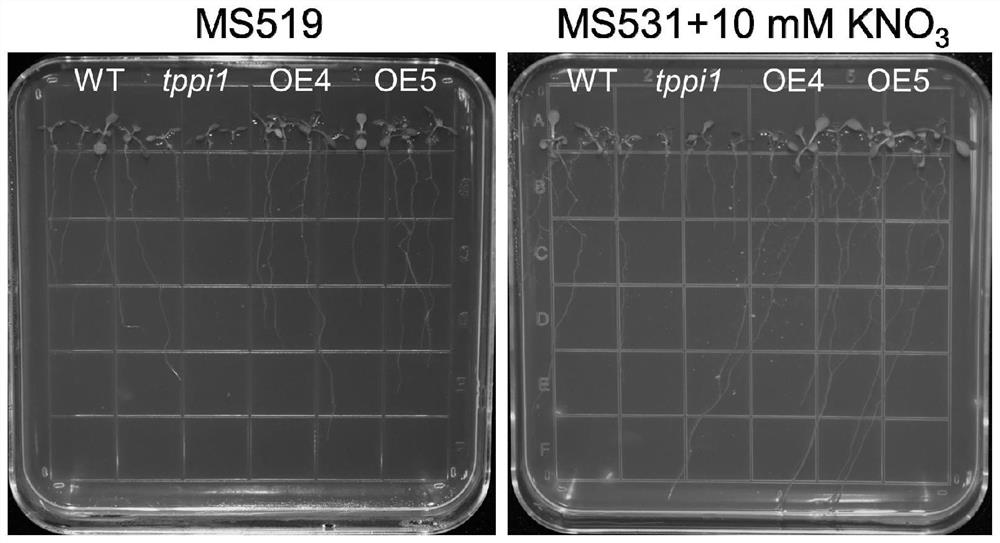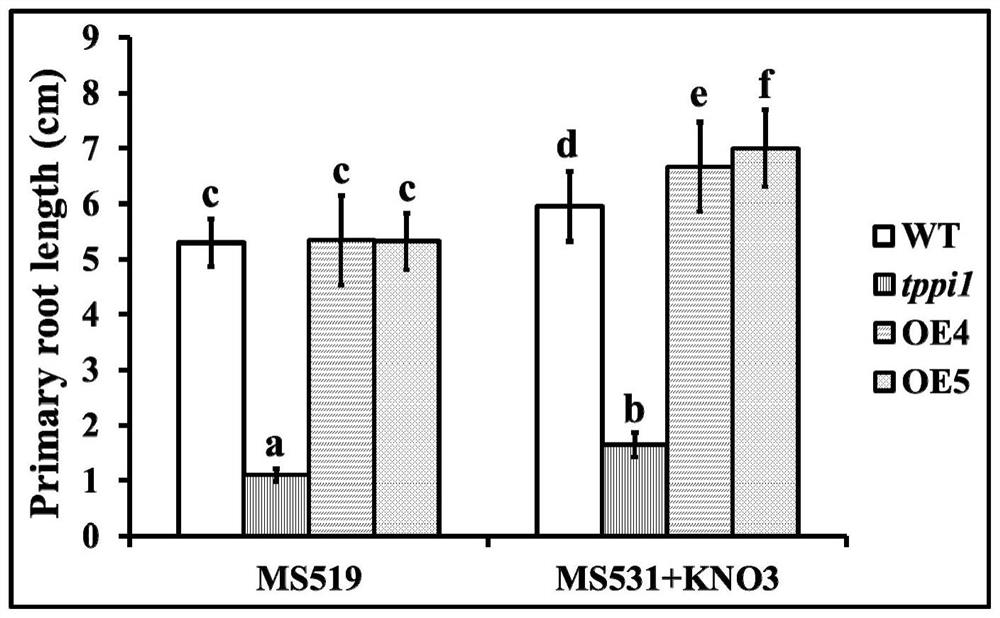Application of TPPI gene in regulation and control of plant root development and promotion of plant jasmonic acid accumulation
A technology of plant roots and jasmonic acid, applied in the field of molecular biology, can solve problems such as no reports, and achieve the effects of promoting accumulation, reducing labor consumption, and reducing fertilizer pollution
- Summary
- Abstract
- Description
- Claims
- Application Information
AI Technical Summary
Problems solved by technology
Method used
Image
Examples
Embodiment 1
[0033] Embodiment 1, the expression level detection of TPPI gene
[0034] (1) Primer design
[0035] Design primers for real-time fluorescence quantification according to the CDS sequence of the TPPI gene, and the primer sequences are:
[0036] Forward primer: 5'-GAATCAACGCTTGGGTAGATTC-3' (SEQ ID No. 2)
[0037] Reverse primer: 5'-TTGACATGAAAGCTTTGTCTGG-3' (SEQ ID No. 3)
[0038] (2) extracting the total RNA of wild-type Arabidopsis thaliana, namely Arabidopsis thaliana (Arabidopsis thaliana, Columbia ecotype) (hereinafter referred to as WT) and transgenic plants OE4 and OE5, and obtaining its cDNA by reverse transcription, Take it as a template, and use the oligonucleotide sequences of SEQ ID No.2 and SEQ ID No.3 as primers to carry out real-time fluorescence quantitative PCR amplification to obtain PCR amplification products. The nucleotide sequence is as shown in SEQ ID No.4. Show. The detection results of TPPI gene expression level are as follows: figure 1 shown. The...
Embodiment 2
[0039] Example 2. The effect of TPPI gene on the growth of plant taproot in a plant artificial climate chamber
[0040] The seeds of transgenic plants OE4, OE5 and wild-type WT were sterilized with 6.5% NaClO for 15 min respectively, the NaClO was discarded, and then the seeds were washed 3-5 times with sterilized sterile water, and then evenly dotted on MS solid medium for vertical cultivation, The solid medium used is MS519 solid medium of Phytotech company (sucrose content is 5g / L, agar dosage is 10g / L) and MS531 solid medium (5g / L sucrose, 10g / L agar), MS531+KNO 3 Add 10 mM KNO to MS531 solid medium 3 . After being placed in a 4°C refrigerator for 3 days, it was placed in an artificial climate chamber for vertical growth. The culture temperature in the artificial climate chamber was 22°C, the light intensity was 6000 lux, the cycle was 16h light / 8h dark, and the relative humidity was 50%. After 10 days of growth, the phenotype was observed and photographed, and the resul...
Embodiment 3
[0043] Example 3. The effect of TPPI gene on the growth of plant taproot in a plant incubator
[0044] The seeds of tppi1 mutants, transgenic plants OE4, OE5 and wild-type WT were sterilized with 6.5% NaClO for 15 min respectively, the NaClO was discarded, and then the seeds were washed 3-5 times with sterilized sterile water, and then evenly dotted on MS solids for culture. Substrate vertical culture, the solid medium used is Phytotech's MS519 solid medium and MS531 solid medium, MS531+KNO 3 Add 10 mM KNO to MS531 solid medium 3 . After being placed in a refrigerator at 4°C for 3 days, it was placed in a light incubator for vertical growth. The culture temperature of the light incubator was 22°C, the light intensity was 9000 lux, the photoperiod was 16h light / 8h dark, and the relative humidity was 50%. After 14 days of growth, the phenotype was observed and photographed, and the results were as follows Figure 4 shown.
[0045] right Figure 4 The root length of the plan...
PUM
 Login to View More
Login to View More Abstract
Description
Claims
Application Information
 Login to View More
Login to View More - R&D Engineer
- R&D Manager
- IP Professional
- Industry Leading Data Capabilities
- Powerful AI technology
- Patent DNA Extraction
Browse by: Latest US Patents, China's latest patents, Technical Efficacy Thesaurus, Application Domain, Technology Topic, Popular Technical Reports.
© 2024 PatSnap. All rights reserved.Legal|Privacy policy|Modern Slavery Act Transparency Statement|Sitemap|About US| Contact US: help@patsnap.com










